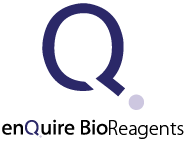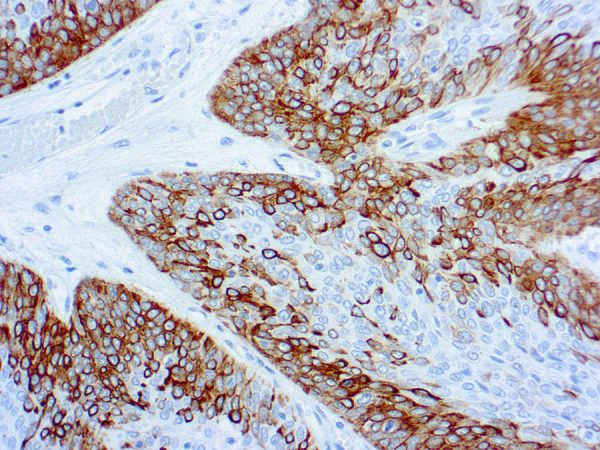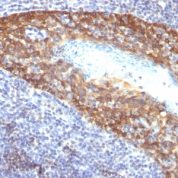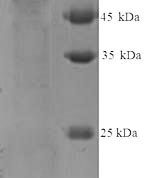Antibody (Suitable for clinical applications)
Sample Type: FFPE Patient Samples.
Tested Applications: IHC. Approved for In Vitro Diagnostic Procedures on FFPE tissues. For tissue collection recommendations, please see datasheet sent with product.
Application Notes
| Specification | Recommendation |
|---|---|
| Recommended Dilution (Conc) | 1:50-1:200 |
| Pretreatment | Citrate Buffer pH 6.0 |
| Incubation Parameters | 30 min at Room Temperature |
Prior to use, inspect vial for the presence of any precipitate or other unusual physical properties. These can indicate that the antibody has degraded and is no longer suitable for patient samples. Please run positive and negative controls simultaneously with all patient samples to account and control for errors in laboratory procedure. Use of methods or materials not recommended by enQuire Bio including change to dilution range and detection system should be routinely validated by the user.
Clonality: Monoclonal
Anti-Cytokeratin 14 Antibody Clone: LL002
Host and Isotype: Mouse IgG3
Recommended Positive Control Sample: Skin, Squamous Cell Carcinoma
Cellular Localization of Antibody LL002 Staining: Cytoplasmic
Buffer and Stabilizer: PBS with 1% BSA and 0.05% NaN3
Antibody Concentration: Lot specific. Plese contact tech support for data.
Immunogen: A synthetic peptide of 15 aa residues from the C-terminus of human keratin 14.
Storage Conditions: This antibody should be stored refrigerated (2-8°C). This product should not be used past the expiration date printed on the vial.
Cytokeratin 14 Information for Pathologists
Summary:
Molecular weight of 50 kDa. Partner is CK5. May be detected by cytokeratin 34BE12. CK5/6+ or CK14+ tumors define a basal subtype of DCIS (Mod Pathol 2006;19:1506) or invasive breast carcinoma; represents 9% of sporadic invasive ductal breast cancers, ER-, PR-, HER2-, high grade, poor prognosis (Mod Pathol 2005;18:1321, Eur J Cancer 2006;42:3149 but see Clin Cancer Res 2004;10:5988-not poor prognosis), associated with BRCA1 (Clin Cancer Res 2005;11:5175). In cervix, loss of expression is associated with high grade SIL and high risk HPV (Hum Pathol 2001;32:1351).Common Uses By Pathologists:
Distinguish parathyroid oxyphil adenoma (CK14+) from carcinoma (CK14-, Am J Surg Pathol 2002;26:344). Distinguish breast papilloma (stronger and more diffuse CK14 staining) from papillary DCIS (Am J Surg Pathol 2005;29:625). Distinguish sinonasal squamous cell carcinoma (poorly differentiated or nonkeratinizing, both CK14+) from sinonasal undifferentiated carcinoma or nasopharyngeal carcinoma (CK14-, Am J Surg Pathol 2002;26:1597). Positive staining - normal Basal keratinocytes in stratified epithelium (various tissue/organs).Limitations and Warranty
This antibody is manufactured in accordance with clinical good manufacturing practices in an ISO13485:2016 certified production facility. It is intended for multiple uses including in vitro diagnostic use and research use only applications. Please see vial label for expiration date. We strive to always deliver antibodies with a shelf life of at least two years.










There are no reviews yet.